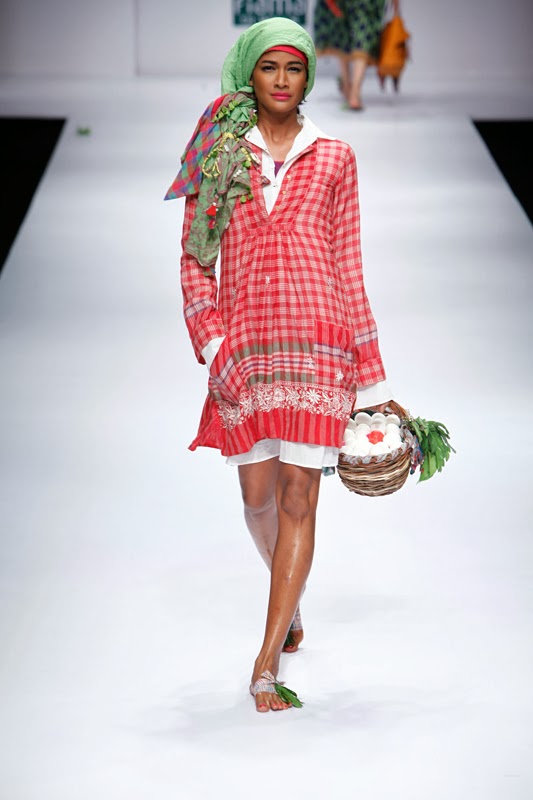Madras checks dress by Aneeth Arora
India has tremendously rich and varied textile traditions. Every technique has been practiced for centuries, with an instinctive sense of proportion, colour and harmony. Each of India’s states - and many of the villages within those states - has its own distinct designs and techniques with an instinctive sense of proportion, colour and harmony. These fabrics have been used for ethnic clothes for centuries but recently contemporary designers (and not only Indian) have shown interest in traditional textiles too and started using them in their creations. And now these vintage weaves fused with modern designs found their way on podiums and in fashionable boutiques. Here are a few examples.
Chanderi embroidered with resham work, dress and jumpsuit by Charu Parashar
Named after the town in Madhya Pradesh, Chanderi is a hand-woven fabric, unique in its translucent and sheer texture. It used to be produced for royalties, who valued its light-weight quality and intricate designs very much. While the transparent yarn might be of cotton or silk, about 90% of Chanderi is made from a cotton-silk blend. Traditionally the fabric was woven in the natural white of cotton and then washed in saffron to give it a golden hue and fragrance. Some weavers were known to use natural dyes made from flowers on the finished woven product.
Madras checks pocket dress. Brooks Brothers
Madras checks skirt by Aneeth Arora
Madras is a lightweight cotton fabric with typical pattern consisting of different colored stripes that cross each other to form uneven checks. This pattern first made their appearance about a hundred and fifty years ago and was the result of the tartan craze which started with the visit of King George IV to Scotland in 1822. As was to be expected, this influenced the British in India and tartan started to be incorporated into Madras. The predominant colors were shades of blue, black and red checks. The modern day Madras fabric has a plaid or checked and sometimes even striped pattern in generally bright colors.
Jamdani dress by Rahul Mishra
Jamdani red dress from Muny
Jamdani refers to weaving intricate floral and geometric designs on very fine cotton muslin or silk base. The base fabric for Jamdani is unbleached cotton yarn and the design is woven using bleached cotton yarns so that a light-and-dark effect is created. It is one of the most time and labor intensive forms of hand loom weaving and it is undoubtedly one of the varieties of the finest muslin.
Bandhani dress from Blumarine
Bandhani boyfriend's shirt from Nor Black Nor White
Bandhani is both complicated and sophisticated method of decorating cloth by just manipulating the dyes. Though the basic process is the same, not only each region but even a village has its own special designs and colour schemes. The technique involves dyeing a fabric which is tied tightly with a thread at several points, thus producing a variety of patterns. The main colours used in Bandhani are yellow, red, blue, green and black. Bandhani work, after the processing is over, results into a variety of symbols including, dots, squares, waves and stripes.
Cotton khadi picnic dress by David Peck
Khadi dress from Shweta Shill & Pankaj Kumar












What a feast for the eyes! I'm particularly loving the Bandhani - I need to hunt some down on my next trip! x
ReplyDeleteBeautiful fabrics. I'm surprise to find out that checkered pattern is also common in India. Меня нельзя запускать в магазин с такими тканями :)
ReplyDeleteA wonderful review Olga, the colors and the patterns are beautiful. My favorite is the Madras dress on the first pic.
ReplyDeleteBeautiful fabrics and designs, love the Madras and Jamdani. I like that whole connection between traditional techniques and fabrics and current design. xxx
ReplyDeletereally fashionable and perfect collection ..
ReplyDeleteluxury Designer wear
Another educational and entertaining read, Olga. My fav is the boyfriend's shirt. That Nor Black nor white has a nice collection!
ReplyDelete